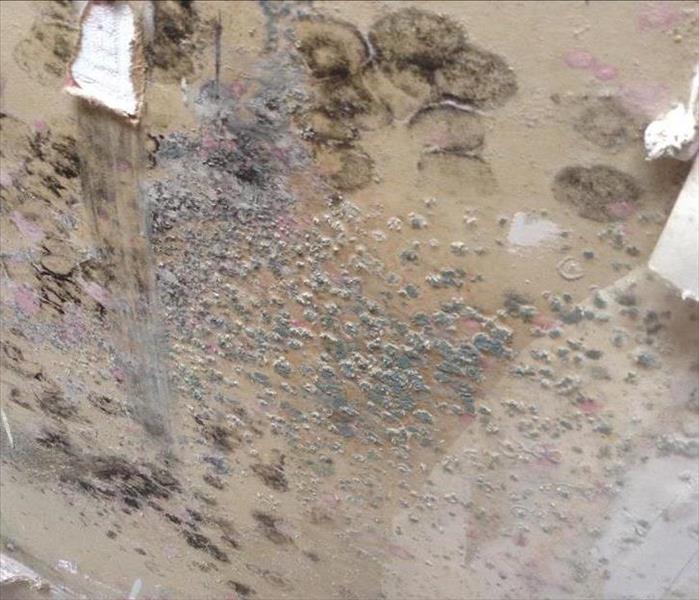When Mold is Present, the Type of Mold Matters.
10/15/2019 (Permalink)
When a homeowner finds mold in their home, they often call us in a panic - concerned that their families health is being compromised.
And, in some cases, that is true however there are many different variables that determine whether the mold in your home is dangerous to your health. An important factor in the treatment of mold is what kind of mold is in your home. In this blog post, we discuss the common types of mold found in Connecticut homes.
Alternaria
Alternia is a commonly found mold which usually grows outdoors. That said, it can make its way into your home, where it grows in damp places such as the bathroom. The best way to keep this mold out of your home is to keep your windows and doors shut on the dry, windy days of summer, which is when it’s numbers are the most concentrated and likely to blow.
Aureobasidium
The aureobasidium mold grows indoors and is often found in the homes we treat. It grows on wooden furniture, surfaces, painted walls and wallpaper. You may also find it around windows and in caulk. If you notice a spotty substance that is pink and black in color in those areas, it’s most likely Aureobasidium
Chaetomium
When a home has mold due to water damage in which the drywall has gotten wet, the culprit is usually Chaetomium mold. A telltale sign is if you smell a musty or old odor in your home.
Fusarium
Fusarium is a mold that tends to grow in cold, wet areas and loves fabrics and carpeting. In our experience, it is often present in basements.
Penicillium
You know the name because of its use as an antibiotic. When airborne, though, Penicillium is a quick growing mold a mold that grows on insulation, furnishings, water damaged furniture, carpeting and more. Penicilium requires less moisture than other species of mold to survive, allowing it to be a fast growing and long surviving mold.
Stachybotrys Chartarum
The most demonized mold in the media, stachysbotrys chartarum is also called black mold or toxic mold. This is due to the fact that this type of mold creates toxic compounds known as mycotoxins that can negatively affect the health of humans. This type of mold can be identified by its musty smell and is found in areas that stay damp, like air conditioning pipes and ducts.
Trichoderma
Trichoderma is another damp area mold. Homeowners often find the trichoderma mold within damp carpeting, wallpaper and similar surfaces. Similar to stachysbotrys chartarum, it also creates mycotoxins.
We get it. Mold can be a frightening discovery and everybody has heard of somebody who has lived a nightmare because of its presence in their home. With professional remediation, however, your home can be made safe again.





 24/7 Emergency Service
24/7 Emergency Service
